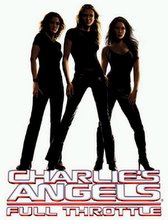What is there to be said for or against stereotyping in the media? Answer with reference to specific examples. (Specimen Question, ’00 a)
Definition: Representation is the mediated versions of people, in this case woman, in the form of a re-presentation.
Positive stereotypes:
Ø Women being more independent
Ø Women try harder at education than men
Negative stereotypes
Ø Women belonging in the home
Ø Housewives
Ø Femme fatale
Ø Only men could do physical jobs such as mechanics
Changing stereotypes
Ø Women becoming more independent, active and self reliant
Ø Women no longer stereotyped as housewives
Ø Women playing as well and as much as men in sports such as football
Stereotypes for:
They make a text easier to understand
Live up to the label (motivates people)
Stereotypes are an easier option to use in a short time slot
Stereotypes against:
Some could be unfair (racist stereotypes)
There are negative stereotypes
Women being sex objects
Some stereotypes are not accurate
False stereotypes can frequently be seen as true and could lead to misunderstanding or hurt feelings.
Asians:
Some stereotypes are sometimes good such as hardworking, doctors, and good in maths.
Against:
They are underrepresented in the media (off-screen)
They are neglected in most media forms
Examples of stereotypes on women:
Ø Women are being sex objects à Laura Mulvey’s theory
Ø Women being subordinate to menàpatriarchal society
Stereotypes are an element that is always found in media texts, whether it adverts, films or television programmes. It is the most common form of media representation ad labels and categorises people.
Ø Media texts contain stereotypes because of the need to economy (create identification)
Ø The function of the media is to please the audience and therefore to fulfil this, representations (stereotypes) are used to meet their expectations
Ø Stereotypes are widely used because audiences can understand theses stereotype are they will be familiar with them.
Ø Familiarly will mean more audiences will understand and attract higher/mainstream audiences because most television programs are quite short, the identities of characters must be established as quickly as possible.
Ø Some stereotypes are used to create humour such as the ‘bimbo’
One of the most common stereotypes of women is the term “bimbo”. It carries particular shameful connotations in post-modern culture. A “bimbo” is supposed to have:
Ø Blond hair
Ø Flashy make up
Ø Large breast
Ø Mini skirt
Ø High heels
She is supposed to be:
Ø Promiscuous
Ø Stupid
Ø UneducatedHelpless
Thursday, May 17, 2007
Subscribe to:
Post Comments (Atom)

No comments:
Post a Comment